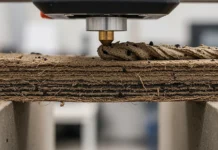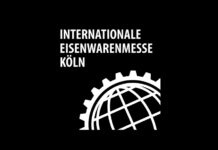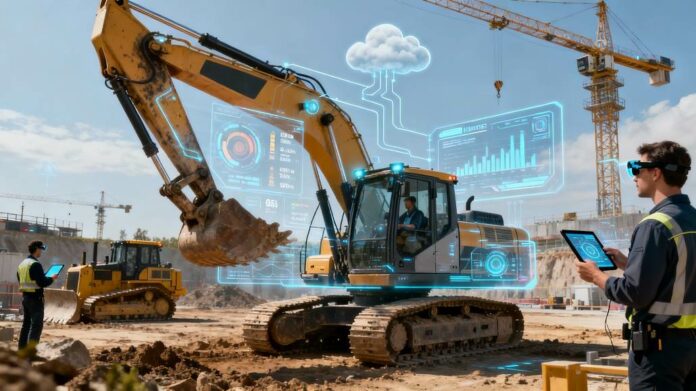Predictive Maintenance Transforming Heavy Construction Equipment
Heavy construction equipment represents the backbone of infrastructure development worldwide, with individual machines often valued at hundreds of thousands or millions of dollars while playing critical roles in project schedules and productivity. Traditional maintenance approaches for construction machinery typically rely on scheduled preventive maintenance, reactive repairs following equipment failures, and human inspection systems that cannot provide comprehensive visibility into equipment condition and performance trends. Predictive maintenance in construction equipment revolutionizes this paradigm through intelligent monitoring systems, advanced analytics, and proactive intervention strategies that maximize equipment availability while minimizing maintenance costs and unplanned downtime.
Contemporary construction projects demand reliability levels that traditional maintenance approaches cannot consistently deliver within acceptable cost parameters. Equipment failures can halt entire construction operations, creating cascading schedule delays and cost overruns that far exceed the value of the failed components. Predictive maintenance systems address these challenges by providing early warning of developing problems while enabling optimal maintenance timing that maximizes equipment utilization and minimizes lifecycle costs.
The integration of Internet of Things sensors, artificial intelligence analytics, and cloud-based monitoring platforms creates comprehensive equipment health management systems that provide unprecedented insight into machine condition, performance trends, and optimal maintenance strategies. These technologies transform maintenance from reactive cost centers to proactive value generators that enhance project outcomes while extending equipment service life.
Advanced Predictive Analytics Applications
Predictive analytics in construction equipment encompasses sophisticated algorithms that analyze sensor data, operational patterns, and environmental factors to forecast equipment condition and maintenance requirements. Machine learning systems can identify subtle changes in vibration patterns, temperature profiles, fluid conditions, and performance characteristics that indicate developing problems long before they result in equipment failures or reduced performance.
Failure mode analysis utilizes historical failure data, component specifications, and operating conditions to predict the likelihood and timing of specific failure modes for individual equipment components. These analyses enable maintenance teams to focus attention on components most likely to fail while optimizing spare parts inventory and maintenance scheduling based on predicted failure probabilities.
Remaining useful life estimation algorithms analyze equipment condition data to predict how long components or entire machines can continue operating before requiring maintenance or replacement. These predictions enable optimal maintenance timing that maximizes equipment utilization while preventing unexpected failures that could disrupt construction operations.
Performance degradation modeling identifies gradual declines in equipment efficiency, power output, or operational characteristics that may indicate developing problems or opportunities for optimization. Early detection of performance degradation enables corrective actions that restore optimal performance while preventing more serious problems from developing.
IoT Maintenance Revolution in Construction
Internet of Things integration creates comprehensive monitoring networks that provide continuous visibility into equipment condition, location, utilization, and performance across entire construction fleets. Advanced sensor systems monitor hydraulic pressures, engine parameters, structural stresses, and environmental conditions while transmitting real-time data to central monitoring platforms that provide comprehensive fleet management capabilities.
Wireless sensor networks enable retrofit installation of monitoring capabilities on older equipment that lacks built-in telematics systems. These systems can provide predictive maintenance benefits for aging equipment while extending service life and improving reliability through enhanced monitoring and maintenance optimization.
Edge computing capabilities embedded in construction equipment enable real-time data processing and decision-making without dependence on cloud connectivity. These systems can provide immediate alerts and protective actions even in remote locations where network connectivity may be limited or unreliable.
Data fusion technologies combine information from multiple sensor types to create comprehensive equipment health assessments that provide more accurate predictions than individual sensors alone. Integration of vibration analysis, oil analysis, thermal imaging, and performance monitoring creates holistic condition assessment capabilities.
Construction Machinery Intelligence Systems
Intelligent machinery systems integrate predictive maintenance capabilities directly into equipment control systems, enabling autonomous responses to developing problems while optimizing operational parameters for extended equipment life. These systems can automatically adjust operating parameters, limit operational loads, or request maintenance attention based on real-time condition assessment.
Autonomous diagnostic systems can perform comprehensive equipment health assessments without human intervention while providing detailed analysis of component condition, performance trends, and maintenance recommendations. These systems utilize artificial intelligence to interpret complex sensor data and provide actionable maintenance guidance.
Operator behavior monitoring systems analyze equipment usage patterns to identify operational practices that may accelerate wear, increase maintenance requirements, or reduce equipment life. Training recommendations based on this analysis can improve operator performance while extending equipment service life.
Load monitoring systems track equipment utilization intensity to optimize maintenance intervals based on actual operating conditions rather than elapsed time alone. These systems can adjust maintenance schedules based on equipment workload while ensuring optimal reliability and performance.
Equipment Reliability Optimization Strategies
Comprehensive reliability optimization addresses equipment design, operational practices, and maintenance strategies to maximize equipment availability while minimizing lifecycle costs. Reliability-centered maintenance approaches focus resources on critical components and failure modes that have the greatest impact on equipment availability and project outcomes.
Condition-based maintenance strategies utilize real-time equipment condition data to determine optimal maintenance timing while avoiding unnecessary maintenance actions that waste resources and potentially introduce new problems. These approaches can reduce maintenance costs while improving equipment reliability through optimized intervention timing.
Root cause analysis systems investigate equipment failures to identify underlying causes and develop prevention strategies that address fundamental problems rather than symptoms. Advanced analytics can correlate failure patterns with operational conditions, maintenance practices, and environmental factors to identify systematic improvement opportunities.
Performance benchmarking compares equipment performance across fleets, projects, and industry standards to identify best practices and optimization opportunities. Statistical analysis of equipment data can reveal operational or maintenance practices that consistently deliver superior reliability and performance outcomes.
Smart Operations and Fleet Management
Integrated fleet management systems coordinate predictive maintenance with project scheduling, resource allocation, and logistics to optimize overall construction productivity. These systems can balance equipment availability, maintenance requirements, and project demands to minimize disruption while maintaining optimal equipment condition.
Dynamic scheduling algorithms adjust equipment assignments and maintenance timing based on real-time condition assessment, project requirements, and resource availability. These systems can prevent equipment failures from disrupting critical project activities while optimizing maintenance resource utilization.
Spare parts optimization utilizes predictive maintenance forecasts to optimize inventory levels while ensuring availability of critical components when needed. Predictive analytics can forecast spare parts requirements weeks or months in advance, enabling optimal procurement and inventory management strategies.
Mobile maintenance systems provide field technicians with real-time access to equipment condition data, maintenance histories, and diagnostic information through tablet computers and smartphone applications. These systems enable more effective maintenance decision-making while improving maintenance quality and efficiency.
Advanced Diagnostic Technologies
Comprehensive diagnostic capabilities encompass multiple technologies that provide detailed assessment of equipment condition and performance characteristics. Vibration analysis systems can detect bearing wear, alignment problems, and structural issues through analysis of equipment vibration signatures while providing trending data that reveals developing problems.
Thermal imaging systems identify heating problems, insulation failures, and electrical issues that could lead to equipment failures while providing non-invasive assessment capabilities that do not require equipment shutdown. Advanced thermal analysis can detect problems that would be impossible to identify through visual inspection alone.
Oil analysis programs monitor hydraulic fluid and engine oil condition to detect contamination, wear particles, and chemical degradation that indicate developing problems. Advanced oil analysis can identify specific failure modes and provide guidance for corrective actions while optimizing fluid change intervals.
Ultrasonic testing systems can detect internal component wear, cavitation, and structural problems through analysis of ultrasonic emissions from operating equipment. These systems can identify problems in sealed components that would be impossible to assess through other non-invasive methods.
Economic Benefits and Implementation Strategies
Economic analysis demonstrates that predictive maintenance systems typically provide substantial returns on investment through reduced unplanned downtime, extended equipment life, and optimized maintenance costs. While initial technology investments may be significant, operational savings often exceed costs within the first year of implementation while providing continuing benefits throughout equipment service life.
Implementation strategies require careful planning that addresses technology selection, data management, technician training, and integration with existing maintenance processes. Phased deployment approaches can minimize disruption while allowing organizations to develop expertise and optimize system configuration based on early experience.
Change management processes help maintenance teams adapt to predictive maintenance technologies while maintaining equipment reliability during transition periods. Training programs must address both technical aspects of new systems and the analytical skills needed to interpret predictive maintenance data effectively.
Vendor partnerships provide ongoing support, system updates, and expertise development that ensure successful long-term implementation of predictive maintenance technologies. Strategic relationships with technology providers can provide access to continuing innovation while ensuring system reliability and performance.
Future Technology Integration and Innovation
Emerging technologies promise even greater predictive maintenance capabilities as computational power increases and analytical techniques advance. Artificial intelligence applications will continue evolving to provide more accurate predictions while requiring less human interpretation and intervention.
Augmented reality applications can overlay equipment condition information, maintenance procedures, and diagnostic data directly onto technician field of view through smart glasses or mobile devices. These systems can improve maintenance quality while reducing training requirements for complex diagnostic procedures.
Digital twin technology creates virtual replicas of construction equipment that incorporate real-time operating data and enable simulation of various maintenance scenarios. These systems can optimize maintenance strategies while providing training platforms for maintenance technicians.
Blockchain applications can provide immutable maintenance records while enabling transparent sharing of equipment condition and maintenance history across multiple stakeholders. These systems can improve equipment resale value while providing confidence in equipment condition for buyers and lessors.
Conclusion
Predictive maintenance represents a transformative approach to construction equipment management that maximizes equipment availability while minimizing maintenance costs through intelligent monitoring, advanced analytics, and proactive intervention strategies. Through comprehensive sensor systems, sophisticated algorithms, and integrated fleet management capabilities, these technologies provide equipment reliability and performance levels that far exceed traditional maintenance approaches.
The successful implementation of predictive maintenance requires commitment from leadership, investment in technology and training, and integration with comprehensive equipment management strategies. As these technologies continue demonstrating their value through improved equipment reliability and reduced operating costs, their adoption will accelerate across the construction industry.
The future of construction equipment maintenance lies in intelligent systems that continuously monitor, analyze, and optimize equipment performance while enabling proactive maintenance strategies that prevent problems before they occur. Predictive maintenance technologies will play increasingly important roles in construction productivity and profitability while supporting the industry’s continued growth and technological advancement.































